A Town Called “Slap” Population: 163,400
Most famous son: Gazi Osman Paşa
While its setting can’t hope to match up to that of nearby Amasya, Tokat’s, with huge craggy rocks soaring up behind it and the Yeşilırmak river river flowing through to the north, is still very impressive. This is a very Turkish town, a place of quiet but plentiful pleasures with enough old buildings in it to keep the most hyperactive list-ticker happy.
Tokat and the hamam story If you want to watch the eyes of a Turkish masseur mist over, all you need do is whisper the name of the Ali Paşa Hamamı in Tokat and, hey presto, the tears will start to form.
This might seem a tad strange, given that Tokat is one of those towns buried in deepest Anatolia that you might expect few non-residents to feel strongly about but it all goes back to an incident in 1730 which was known as the Patrona Halil Revolt after its leader. At that time many of the people working in Turkey’s bathhouses came from Albania, as did Patrona Halil himself. Enraged at the excesses of the Tulip Era when the high cost of exotic flowers created an economic bubble rather like the NFT one, Halil led an uprising against Sultan Ahmed III and his powerful grand vizier and son-in-law, Damad İbrahim Paşa.
It was the first revolt that had not been led by the Janissaries (the army), and once the dust had settled, Sultan Murad I decided that he could no longer risk letting foreigners plot to their heart’s content in the privacy of the baths and so decreed that from then on all hamam workers were to be drawn from a group of 30 settlements around Tokat and Sivas. Their descendants still work the baths today, hence the nostalgia-tinged tears.
Don’t leave town without:
- tasting the delicious Tokat kebab
- taking a bath in the Ali Paşa Hamamı
- drinking tea with the youthful crowd in the Taş Hanı
Around town
If you’ve never tried out a hamam (Turkish bath), then Tokat is the place to pick up the public bathing habit. You can hardly miss the lovely old Ali Paşa Hamamı (1572) as it stands immediately opposite the main square, its lead domes covered in extraordinary glass bulbs shaped like human breasts. It was once part of a complex with the Ali Paşa Cami across the road. Take a look at the fine şadırvan in front of it and the tomb of Ali Paşa, a Bosnian who married into the imperial family, to the side. The mosque resembles Sinan’s Hadım İbrahim Paşa Cami in İstanbul but there is no proof that he designed this mosque too.
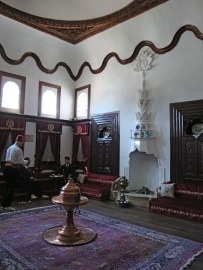 The bath aside, Tokat’s other winning attraction is the 19th-century Latifoğlu Konağı, a splendid Ottoman house restored to its original appearance and opened to the public. The most beautiful rooms are the separate upstairs salons for men (Paşa Odası) and women (Havuzbaşı Odası) although many people will find the fully-equipped kitchen particularly interesting.
The bath aside, Tokat’s other winning attraction is the 19th-century Latifoğlu Konağı, a splendid Ottoman house restored to its original appearance and opened to the public. The most beautiful rooms are the separate upstairs salons for men (Paşa Odası) and women (Havuzbaşı Odası) although many people will find the fully-equipped kitchen particularly interesting.
Just south of the Latifoğlu Konağı stands a 33m-high clocktower whose face still features the original Arabic numerals. It was erected in 1901. There’s a clock-repair shop (what else?) in the basement.
Tokat’s back streets, especially Bey Sokak, harbour many similarly grand houses. The Madımağın Celal’ın Evi is said to be one of the most splendid, with scenes of the Topkapı Palace and Blue Mosque painted on its walls. Unfortunately it is not open to the public.
There are lots of more workaday Ottoman houses in varying states of repair in the back streets.
Also worth a look is the lovely old Gök (Blue) Medrese which dates back to 1277. It used to house the Tokat Museum but this has moved to Sulusokak Caddesi. The medrese is down a steep flight of steps. If the door is open you may be able to glimpse some beautiful blue tilework and column capitals obviously taken from a much older building.
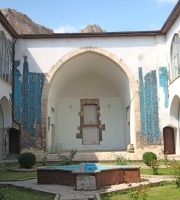 Inside the medrese is the Kırkkızlar Türbesi (Forty Girls Tomb) which, despite its name, is actually a collection of 20 tombs, one of them containing the remains of Mu’in al-Din Süleyman, not a girl at all but the male founder of the medrese who went on to organise the murder of the Selçuk Sultan Kılıç Arslan IV so that he could become regent to his young son. Perhaps inevitably, his scheming rebounded badly when he was executed by the Mongol invaders in 1278.
Inside the medrese is the Kırkkızlar Türbesi (Forty Girls Tomb) which, despite its name, is actually a collection of 20 tombs, one of them containing the remains of Mu’in al-Din Süleyman, not a girl at all but the male founder of the medrese who went on to organise the murder of the Selçuk Sultan Kılıç Arslan IV so that he could become regent to his young son. Perhaps inevitably, his scheming rebounded badly when he was executed by the Mongol invaders in 1278.
Just doors from the Gök Medrese stands the sturdy Taş (Voyvoda) Han which dates back to 1631. Until the early 20th century the han was used by Armenian traders, and as recently as the late 1990s it used to house one of Turkey’s better collections of antiques shops. The han now houses a large and popular tea garden and the usual collection of handicraft shops.
Across the road from the Taş Han and down some steps is Tokat’s lively market where you can find all sorts of interesting things for sale. Behind it you will see the large and attractive Meydan (Hatuniye) Cami (1485) with, behind it, the Sedirhan cafe housed in what was once the soup kitchen of the mosque complex. 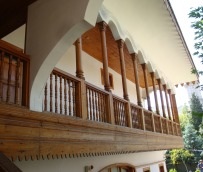
Just down the road is the Behzad Cami (1536) and, beyond that, the Mevlevihane (dervish lodge) which houses the Vakıf Müzesi (closed Mondays). The downstairs section offers information about the whirling dervishes and shows off some old hand-written manuscripts while upstairs you can see some of the old carpets taken from local mosques and stored for safekeeping. Here, too, is the beautifully rebuilt semahane where models of dervishes begin whirling as you open the door. The lodge was built in 1618 for Sultan Ahmed I’s vizier Sülün Muslu Ağa but was extensively rebuilt in 1850 for Sultan Abdülmecid.
The Ali Paşa Hamamı, Latifoğlu Konağı, Gök Medrese and Taş Han are all easy to find as they’re located along Gazi Osman Paşa Bulvarı, the main drag that was named after Tokat’s most famous son, the hero of the Battle of Plevne in 1877.
Out on a limb but signposted from near the clocktower is the Atatürk Evi, actually another elegant Ottoman house that’s open to the public rather than just a museum to the first Turkish president. It’s well worth visiting.
Sulusokak Caddesi
GOP Bulvarı is pretty soulless except around the main square where it runs between the Ali Paşa Cami and the hamam that was once part of the same complex. The same can certainly not be said of Sulusokak Caddesi, the street that runs east off it from beside the Ali Paşa Cami.
In the 1960s the Sivas to Samsun road, which ran through Tokat along Sulusokak, was rerouted, and GOP Bulvarı took its place as the main road. This turned out to be the salvation of the many little mosques, hamams and hans that dotted the old road and might otherwise have been pulled down. Today Sulusokak Caddesi has been almost completely restored and there can be few streets outside İstanbul that can boast so many medieval buildings in such close proximity.
As you stroll along it note in particular the tiled Selçuk Ali Tusi Türbesi dating back to 1233, the Yağıbasın Medresesi dating back to 1145-47, and the 14th-century Kadı Hasan Camii.
Just before the museum a turning on the right leads to the Ulu Cami. Originally built for the Danışmends in the 12th century, it was rebuilt in 1679 for Sultan Murad IV. A path (tough) behind it leads up to the castle which has been much more sensitively restored than many in Turkey.
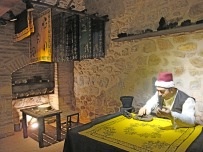 Tokat Museum (closed Mondays) is now housed in the 15th-century Arastalı Bedesten, a fine setting for its collection of local archaeological finds and ethnographic materials. The single most intriguing exhibit is a wax effigy of Christina, a local Christian martyred for her faith during the reign of the Roman Emperor Diocletian (284-305).
Tokat Museum (closed Mondays) is now housed in the 15th-century Arastalı Bedesten, a fine setting for its collection of local archaeological finds and ethnographic materials. The single most intriguing exhibit is a wax effigy of Christina, a local Christian martyred for her faith during the reign of the Roman Emperor Diocletian (284-305).
In the past this was where customs dues had to be paid, making this one of the most important buildings in the city. Right beside it is a giant Aşevi or Cookhouse.
Next to the museum the Takyeciler Cami dating back to the 15th century has another lovely şadırvan and sits right beside an expanse of unrestored cobbled ground, a very pretty sight. Across the road the Deveçiler Hanı is the latest building to be restored.
At the end of the street the Paşa Hamamı dates back to 1434 when it was built for the grand vizier Yörgüç Rüstem Paşa. Nearby the stone facade of a building with what look like carvings of two chained dogs on it goes unlabelled.
The yazma
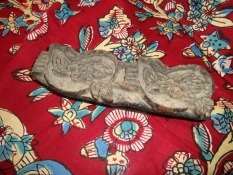 From the 15th century onwards Tokat was the main centre for the production of yazmas, originally hand-drawn and painted cloths, now usually block-printed scarves. For a while the city actually had a monopoly on their manufacture and a tax on sales helped support the sultan’s mother.
From the 15th century onwards Tokat was the main centre for the production of yazmas, originally hand-drawn and painted cloths, now usually block-printed scarves. For a while the city actually had a monopoly on their manufacture and a tax on sales helped support the sultan’s mother.
As recently as the 1980s it was still possible to visit the rather grim Gazi Emir (Yazmacılar) Hanı where yazmas used to be dyed and printed. Sadly, industrial tourism has yet to catch on in Turkey and yazma production has now been relocated to a factory in the much less romantic northwestern outskirts of town where the gauzy, flower-printed scarves worn by most Anatolian women are manufactured on a massive scale.
The Han has now been turned into a boutique hotel. Shops around it still sell yazmas but you’ll struggle to find anyone who is still hand-printing them and many of the designs have been adapted to suit a new tourist market.
Eating
Try a mis kebap at the Şehrazat Restaurant beside the main square.
The balcony of the trendy Karadeniz Pastanesi on Gazi Osman Paşa Bulvarı near the Taşhan is great for people-watching.
There are atmospheric tea gardens beside the Latifoğlu Konağı and in the Sedirhan.
Tokat kebab For gourmets Tokat’s lip-smacking main attraction is the Tokat kebap, a delicious dish created by hanging skewers of lamb, potatoes and aubergine inside a wood-burning oven.
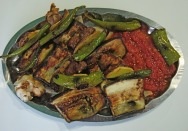 A lump of lard is added to the skewer and as it melts it bastes the ingredients below. Beside them tomatoes and peppers cook on separate skewers. Eventually all the ingredients are brought together and garnished with garlic. The result? An unforgettable taste sensation, best eaten with the fingers. One of the best places to try it is the tiny Mollaoğlu Kebap Salonu in the market near the Meydan Cami. Otherwise try the Yeni Çınar and Yeşil Köşe Lokantasıs, both of them on GOP Bulvarı. The locals prefer to head out of town to the larger restaurants beside the river.
A lump of lard is added to the skewer and as it melts it bastes the ingredients below. Beside them tomatoes and peppers cook on separate skewers. Eventually all the ingredients are brought together and garnished with garlic. The result? An unforgettable taste sensation, best eaten with the fingers. One of the best places to try it is the tiny Mollaoğlu Kebap Salonu in the market near the Meydan Cami. Otherwise try the Yeni Çınar and Yeşil Köşe Lokantasıs, both of them on GOP Bulvarı. The locals prefer to head out of town to the larger restaurants beside the river.
Sleeping
For the time being Tokat still lacks a boutique hotel, although there are plenty of perfectly serviceable places to stay, most of them primarily intended for a business clientele.
Büyük Tokat Oteli Four-star facilities but far from the centre near the river.Tel: 0356-228 1661
Çavuşoğlu Plevne Otel Mildly cheaper hotel on Gazi Osman Paşa Bulvarı. Tel: 0356-214 2207
Yazmacılar Han Hotel If you can afford it this is probably the most atmospheric place to stay in the city. Its location is excellent as is its backstory as the place where yazmas used to be hand-printed. Tel: 0356-212 1211
Yücel Hotel Two-star hotel popular wiith groups near the Meydan Cami.Tel: 0356-212 5235
Hotel Burcu Three-star business hotels with comfortable if somewhat dark rooms near the clocktower.Tel: 0356-212 8494
Transport info
Tokat is seven hours by bus from Ankara (440km), two hours from Amasya (115km), 75 minutes from Sivas (105km), and one hour from Amasya. The otogar is a longish walk from the town centre at Köprübaşı, more or less opposite an old humpbacked Ottoman bridge (1250).
To reach Pazar/Ballıca, Niksar, Sulusaray and Turhal catch a local bus from the İlçe ve Köy terminal rather than from the main bus station. It can be easier to get to Amasya by taking a local bus to Turhal and changing there rather than trekking out to the otogar.
Topçam used to offer daily services to Ankara in an old-fashioned Mercedes bus with glistening bodywork. I suspect this is no longer true.
Day trip destinations


